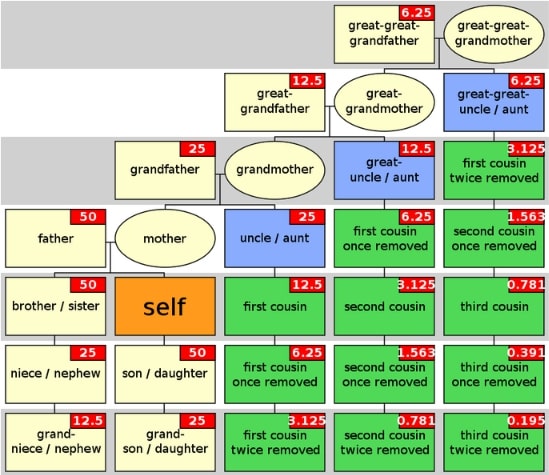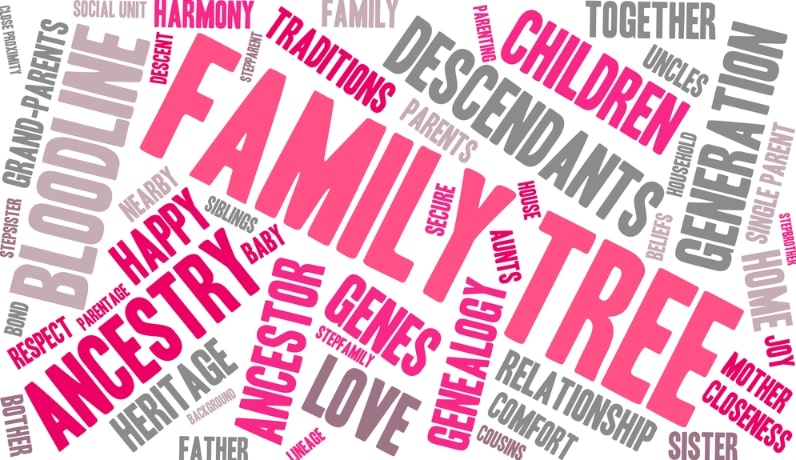Discovering what is a third cousin within the complex web of a family tree can be an intriguing journey. Let’s delve into the topic of what are third cousins, shedding light on the term’s meaning and its importance in genealogy.
Understanding the third cousins’ meaning connects us to our extended family and is an invaluable starting point for novice genealogists. By exploring how third cousins fit into the family tree, beginners can effectively use genealogical tools to trace their lineage, uncover shared ancestors, and perhaps discover unexpected family stories.

What Is a Third Cousin?
Third cousins are relatives who are both descended from a shared great-great-grandparent, making this ancestor four generations away for each of them. This systematic approach to familial relationships helps clarify the connections within an extended family tree. To understand “what is a third cousin,” consider this: your third cousin is the child of your parent’s second cousin.
Both of you share great-great-grandparents as your most recent common ancestors.
In this lineage, the parents of third cousins are also related. Specifically, your parents and your third cousin’s parents are second cousins, meaning they share a great-grandparent. Extending this familial chain, the grandparents of third cousins are first cousins, as they have a grandparent in common.
The 3rd cousin relationship may initially appear complex, but let’s simplify it for better understanding. Essentially, your third cousin is also a great-great-grandchild of your shared great-great-grandparents.
Tracing this lineage, one of your third cousin’s great-grandparents and one of your great-grandparents were siblings. Their respective children, your grandparents and your third cousin’s grandparents, were first cousins. Following this line, the next generation – your parents and your third cousin’s parents – are second cousins. Ultimately, this makes you and your third cousin the children of these second cousins.
Third cousins link individuals and their broader family history, illustrating how extended families grow and branch out over generations. Understanding this connection is vital for genealogy enthusiasts, as it offers a clear view of family lineage and the intricate web of relationships that form our ancestral past.
How Related Are Third Cousins?
Third cousins have a genetic connection, but it’s less substantial than the DNA connection with closer relatives. When considering “Are 3rd cousins blood related,” they usually share a small amount of DNA. This amount can vary quite a bit, but it’s a small percentage on average. This difference in shared DNA is due to how genes are passed down in families, which can be random.
It is an interesting fact that, in some cases, third cousins may not share any detectable DNA. The possibility of third cousins not sharing DNA is due to the way genes are passed down through generations and the phenomenon of recombination.
Now, what is the 3rd cousin’s meaning with marriage legality and genetics? In general, marrying third cousins is legal in most places. The genetic overlap between third cousins is relatively minor, significantly reducing potential genetic risks for their descendants. While cultural norms and family traditions can shape perceptions of these unions, they are generally considered acceptable genetically.
Photo credit: https://depositphotos.com/home.html
Are Third Cousins Considered Family?
The perception of whether third cousins are considered part of the “family” can significantly depend on various factors such as family dynamics, geographical proximity, and cultural norms. In families that pay close attention to their 3rd cousin family tree, these relatives often play a significant role in each other’s lives, particularly in regions where families remain geographically close.
In such scenarios, older generations, like grandparents or great-grandparents, often are pivotal in maintaining these familial bonds. Nonetheless, with the passing of these elderly members, the connection with distant relatives like third cousins might lessen, shifting perhaps to more virtual forms of interaction, like social media.
Families might often be unaware of their third cousins, even if they reside in the same geographic area, because they lack close familial ties. This situation often leads to third cousins being virtually strangers, even though they share common ancestors.
The perception of what constitutes a near or distant relative can differ. A critical factor in this perception is whether the common ancestor is known personally. Since third cousins share great-great-grandparents, their parents, who are second cousins, might have had a personal connection with their shared great-grandparents. This generational acquaintance can significantly influence the recognition and interaction within the extended family.
The interaction between third cousins can vary, ranging from regular family reunions to complete non-recognition. While geographic separation can play a role, the advent of digital communication and genealogy platforms allows for discovering and maintaining these relationships.
Moreover, many people didn’t have the opportunity to meet their great-great-grandparents, the common ancestors shared with third cousins. Nonetheless, meeting third cousins at a large reunion is not unusual.
Scientifically, third cousins are indeed family, sharing a lineage and DNA from a common ancestor. They might be unfamiliar to each other in day-to-day life. Still, the genetic link remains a testament to the extended and intricate web of family connections that span generations.
Photo credit: https://depositphotos.com/home.html
How Many Third Cousins Does the Average Person Have?
A study by Henn provides insight into the prevalence of distant relatives in a population. The research examined the relationship between the size of a genetic database and the number of detected cousins (ranging from 2nd to 9th degree) per individual.
Research suggests that the average person is estimated to have about 190 third cousins. However, this number can vary based on family size and structure. The number of third cousins might be higher in larger families and lower in smaller families. This statistic provides a glimpse into the expansive nature of family connections, highlighting how an individual can be linked to a surprisingly extensive network of relatives.
Additional Types of Third Cousins
Additional types of third cousins can encompass those who share a common great-great-grandparent but through distinct familial lines or connections, such as maternal and paternal great-great-grandparents.
What Is a Third Cousin Once-Removed?
A third cousin once-removed represents a generational shift in the family tree. This term is used when there is a one-generation difference in relation to a third cousin. For instance, the child of your third cousin is your third cousin once-removed. Similar to your parents, your third cousin would be their second cousin once-removed. Building out your family tree to confirm the lineage is essential to determine these relationships on your DNA match list, as DNA testing platforms typically don’t label “removed” relatives by default.
Understanding “cousins removed” might seem daunting at first, but it becomes more apparent with some calculation. To ascertain if someone is your third cousin or once-removed, start by confirming the relationship. Ensure that the closest common ancestor is a great-great-grandparent. Then, count the number of generations you are from this most recent common ancestor (MRCA) and subtract four. The difference will indicate the number of times removed.
For example, if you are six generations away from the MRCA, subtract four from six, resulting in two generations removed. In this case, you and your cousin are third cousins twice-removed.
What Is a Half-Third Cousin?
A half-third cousin arises when your great-great-grandparents are half-siblings, meaning you share only one great-great-grandparent. That often happens when a great-great-grandparent remarries after the death or divorce of their first spouse and has children with both partners. Their children are half-siblings, making their descendants half-cousins at various generational levels.
Identifying half-third cousins involves tracing how they fit into your family tree. It’s common to find more half-cousins than anticipated, especially since affairs and second marriages in earlier generations may not be well documented. Still, their genetic legacy can be uncovered through DNA testing.
Discover Your Family Tree with GenealogyBank
Uncovering your family history is more than just a pursuit of knowledge; it’s a quest to understand your roots and connections. GenealogyBank is your ideal partner in this adventure, offering extensive resources to help you unravel your ancestors’ stories. Our tools are beneficial to identifying complex familial ties, including answering questions like what is a third cousin and exploring the depths of these relationships within your family tree.
Whether you’re looking to decipher your surname’s meaning or trace the branches of your family tree, GenealogyBank provides the tools and data to bring your family history to life.
Explore with us and connect the dots of your unique ancestral story.
Explore over 330 years of newspapers and historical records in GenealogyBank. Discover your family story! Start a 7-Day Free Trial
Note on the header image: “family” word cloud. Credit: https://depositphotos.com/home.html
